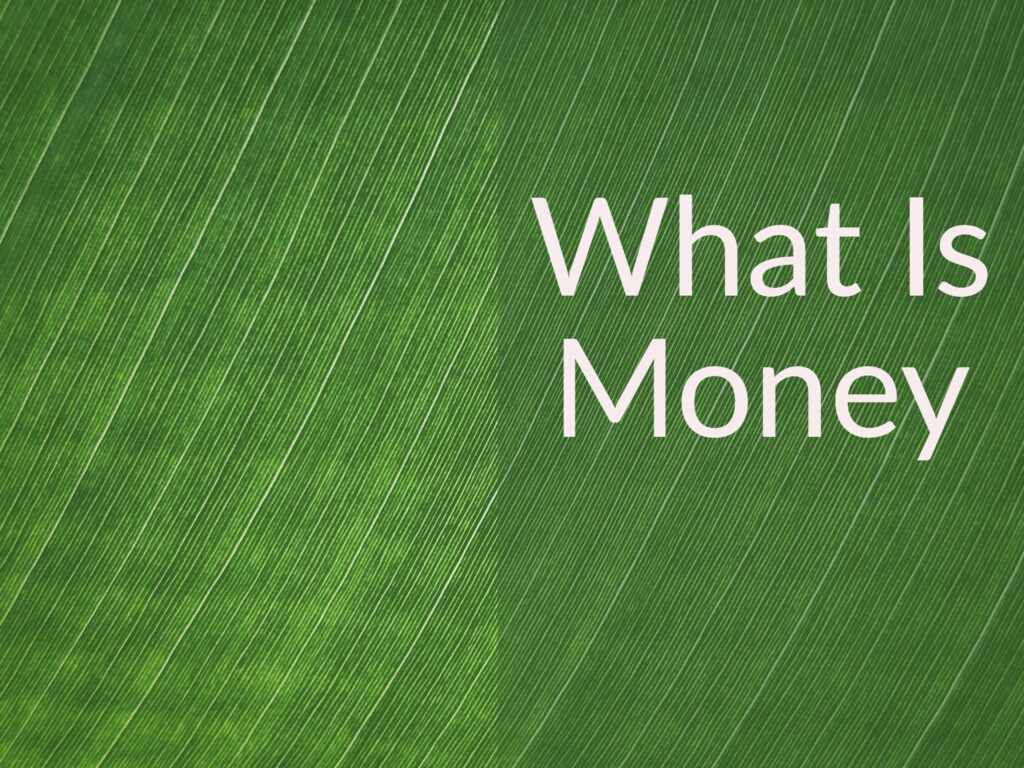David and his son Camden hold a conversation about money, its attributes, how it’s created, and how money differs from investments.

Topics covered include:
- How our earliest money memories impact our views on money
- The difference between public and private money
- What are the two primary attributes of money
- Why money should be accepted with no questions asked
- How some countries use more cash than others
- How money differs from investing
- Why private money can be risky
Part One
Part Two
Episode Sponsors
LinkedIn – Post your job for free
Related Episodes
424: Are More Bank Runs Coming? The Collapse of Silicon Valley Bank
Transcript
Part 1
David Stein: Welcome to Money For the Rest of Us. This is a personal finance show on money, how it works, how to invest it, and how to live without worrying about it. I’m your host, David Stein. Today is episode 392. It’s titled, “What is money? And how to think about it, Part I”
This episode format is different than we’ve done on Money For the Rest of Us. My son Camden and I have a discussion about money, and we do it over a period of two episodes.
We dive into a number of aspects of money—public versus private money, how money is debt, what are the attributes of money, how money is energy, and many other topics. Hopefully, you’ll find this two-part series helpful. Let’s go ahead and get started.
The first episode of Money For the Rest of Us was on what is money. And we’ve had a number of episodes about money, what is it, how to use it, how it’s created, what are the risks with money.
But there has been a lot of developments in really the last few months, where I would say there’s a lot of money confusion; where individuals thought they held something that was money—Terra USD, the stablecoin, for example—and within hours, that money was completely gone.
So I thought it would be helpful to bring in my son, Camden, who is a partner at Money For the Rest of Us, and we’re going to talk about money and talk about stories of money so that we understand the principles of money.
And typically, when we think about money, it’s helpful to start with our earliest memories of money, because that—you could call it baggage, you could call it that narrative, that relationship with money starts very, very young. So Camden, welcome to the podcast.
Camden Stein: Thanks. Happy to be here. I guess you could say long-time listener, first-time caller.
David Stein: That’s right. And Camden has worked with the podcast, he worked at Money For the Rest of Us, I think it was four or five years ago, and recently rejoined in April, full-time.
Camden, when you think about money, your earliest memories of money—mine, I really just remember getting dollar bills sent to me in birthday cards from my aunts and uncles. Just crisp dollar bills. That was money to me—saving it up, putting it in a piggy bank, and then spending it well. What are some of your first memories of money?
Camden Stein: I think some of mine are probably along very similar lines; you know, we get money for our birthdays, for special occasions, a lot of times. For me, especially, I remember having a paper route at a really young age, and I know that you would remember that as well. I think I had my first paper route sometime around three and a half.
As a Money For the Rest of Us Plus member, you are able to listen to the podcast in an ad-free format and have access to the written transcript for each week’s episode. For listeners with hearing or other impairments that would like access to transcripts please send an email to jd@moneyfortherestofus.com Learn More About Plus Membership »
